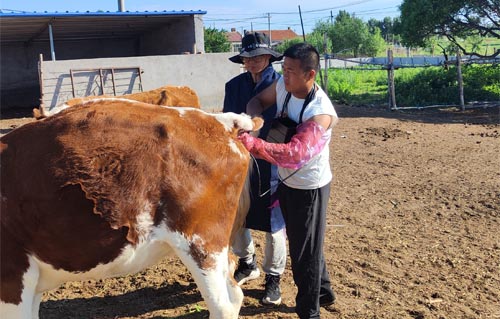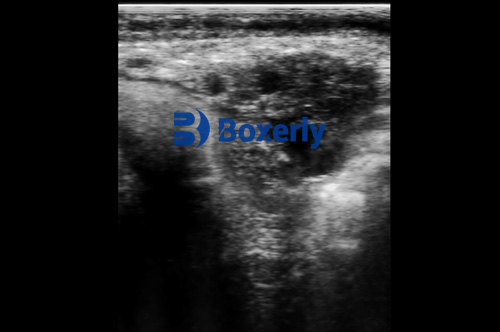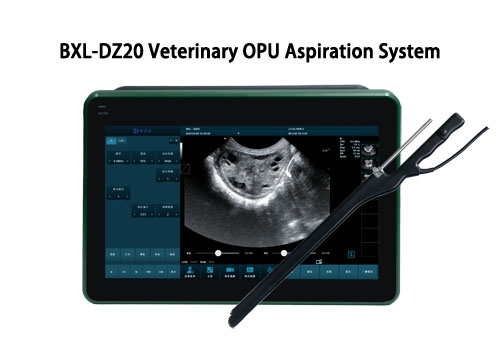In the world of modern cattle reproduction, assisted reproductive technologies (ARTs) have dramatically transformed herd management, genetic improvement, and productivity. Among these technologies, Ovum Pick Up (OPU) has become a cornerstone technique for retrieving oocytes (egg cells) from donor cows, enabling the large-scale production of embryos through in vitro fertilization (IVF). In recent years, innovations in OPU methods have significantly improved both the efficiency and success rates of cattle reproduction programs. This article explores the latest advancements in OPU technology and their implications for the livestock industry.

Understanding Ovum Pick Up (OPU)
Ovum Pick Up is a minimally invasive procedure used to collect unfertilized oocytes directly from the ovaries of live cows. Under ultrasound guidance, a specialized aspiration needle is inserted through the vaginal wall into the ovarian follicles. The collected oocytes are then matured, fertilized in vitro, and cultured into embryos, which can be transferred to recipient cows or cryopreserved for future use.
Initially developed in the late 20th century, OPU was a breakthrough, but early protocols were limited by low recovery rates, oocyte quality issues, and a need for highly skilled operators. However, continual refinements in equipment, technique, and cow management have made modern OPU much more effective.
Technological Improvements in OPU
1. High-Resolution Ultrasonography
One of the most critical advancements in OPU is the use of high-frequency, high-resolution ultrasound probes. Modern probes, operating at frequencies between 7.5 to 10 MHz, provide detailed images of ovarian structures, allowing precise follicle targeting. Improved imaging minimizes trauma to ovarian tissue, increases the retrieval of viable oocytes, and reduces procedure time.
2. Specialized Aspiration Needles and Systems
Aspiration needles have evolved to become finer and more efficient. Double-lumen needles allow for simultaneous follicle flushing and aspiration, increasing the number of oocytes retrieved from small follicles that might otherwise be missed. In addition, controlled vacuum pressure systems have been fine-tuned to optimize oocyte recovery while minimizing mechanical damage.
3. Hormonal Stimulation Protocols
While OPU can be performed on unstimulated (natural cycle) cows, the use of superstimulation protocols has significantly boosted oocyte yield. Administering follicle-stimulating hormone (FSH) over a series of days prior to OPU encourages the growth of multiple medium-sized follicles, each containing a potentially competent oocyte. Advances in hormone formulations and dosing schedules have further refined these protocols, enhancing both the quantity and quality of retrieved oocytes.
4. Improved Oocyte Handling and Culture Media
Advances in laboratory techniques, particularly the development of optimized oocyte maturation and embryo culture media, have increased the developmental competence of oocytes collected via OPU. Media now more closely mimic the natural bovine reproductive environment, supporting higher fertilization rates and embryo viability.
Moreover, non-invasive assessment techniques such as oocyte morphology grading and polar body detection help select the best candidates for IVF, further improving outcomes.

Practical Applications of Modern OPU
Modern OPU techniques offer cattle producers a range of strategic advantages:
Genetic Advancement: Superior cows can produce dozens of embryos annually, accelerating the spread of valuable genetics across a herd or even internationally.
Preservation of Rare Breeds: OPU enables genetic conservation efforts by collecting oocytes from endangered or rare breeds, even from animals that may not be able to carry a pregnancy themselves.
Management of Infertility: Cows with uterine abnormalities or other reproductive issues can still contribute genetically through oocyte collection and embryo transfer.
Efficient Use of Resources: High-value embryos can be produced and implanted into lower-cost recipient cows, maximizing return on investment.
Challenges and Future Directions
Despite its many benefits, OPU is not without challenges. Operator skill remains critical; poor technique can damage ovarian tissue or compromise oocyte quality. The process also requires significant investment in equipment, laboratory facilities, and trained personnel.
Looking ahead, several exciting developments are on the horizon:
Automated Systems: Research is ongoing into semi-automated OPU systems that could standardize procedures, reduce operator dependency, and minimize stress on donor animals.
Cryopreservation Advances: Improvements in vitrification methods for oocytes and embryos are making it more practical to store genetic material without loss of viability.
Genomic Selection Integration: Combining OPU programs with genomic testing allows producers to select the best embryos for implantation based not only on parentage but also on specific genetic markers for traits such as milk yield, feed efficiency, and disease resistance.
Conclusion
Advances in Ovum Pick Up techniques have opened new doors for cattle reproduction, offering farmers and breeders powerful tools for accelerating genetic improvement and herd productivity. With continuous technological refinement and integration with other biotechnologies, OPU is poised to play an even greater role in shaping the future of the cattle industry.
As accessibility to high-end reproductive technologies increases worldwide, even smaller operations may soon be able to harness the benefits of OPU, driving broader improvements across the livestock sector. By staying informed about these advancements and implementing best practices, cattle producers can ensure they remain competitive in an increasingly sophisticated agricultural landscape.
tags:



